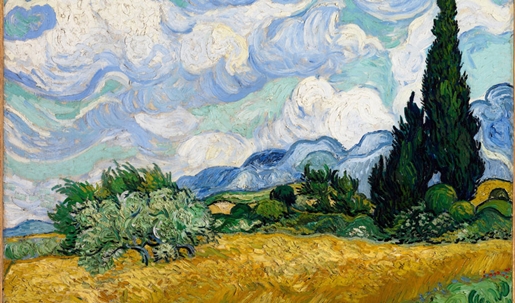|
ARTE E CIÊNCIA
Why do yellow pigments darken over time ? If you are lucky enough to have seen Leonardo da Vinci’s "The Last Supper" in person, you may be disappointed to learn that only about 20% of it is original. Most of the mural is actually the work of restorers whose efforts spanned hundreds of years. Paintings deteriorate over time in many ways. Varnishes age, dirt and grime collect on the surface, and light takes its toll on the pigments. A new paper published in Science Advances on June 7 reveals the physics behind the darkening of yellow pigments that have been exposed to light. Chrome yellow was used extensively by painters of the 1800s, including Manet, Cézanne and Monet, and perhaps most famously by Van Gogh in his paintings of wheat fields, sunflowers and starlight. The yellow from these paintings is believed to have appeared much brighter back then than it does today.  Vincent Van Gogh used the pigment known as chrome yellow in his famous painting "Wheat Field with Cypresses."
The researchers discovered that the exposure to light did not trigger any chemical process, such as oxidation, that changed the pigment’s color. Instead, they noticed changes in the physical structure of the small crystals that make up the pigments. The exposure to light made the crystals grow larger but at the same time decreased their crystallinity, which means more variations among the individual crystals' physical structures. The decreased crystallinity causes more light to be absorbed by the pigments, darkening them over time. Besides chrome yellow, the researchers also investigated four other yellow pigments: Naples yellow (predominantly used in paintings between 1700-1850), cadmium yellow (discovered in the 1800s and still popular among painters to this day), litharge (a lead-based pigment used since ancient times), and orpiment (highly toxic arsenic sulfide minerals used since ancient times). The effect of light on each pigment is similar, only varying in degrees. The researchers think that the new plasma-based technique can add to the arsenal of tools for analyzing historic paintings and help develop new conservation approaches, such as putting the paintings behind glass panels that can filter out light of certain wavelengths. Inside Science. Accessed: Sept. 15, 2019.
|
||||||||||||||||||||||||